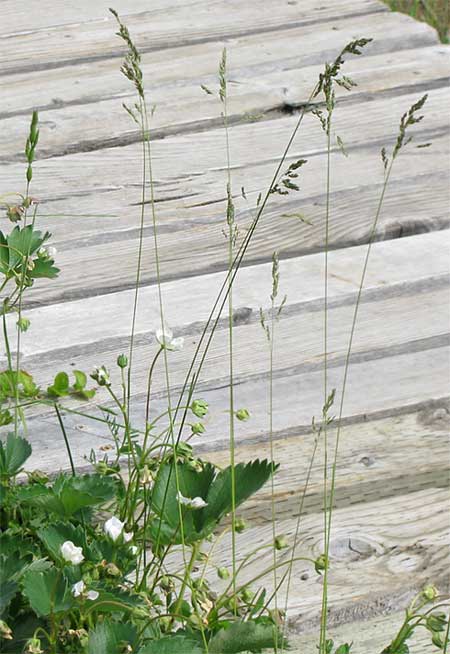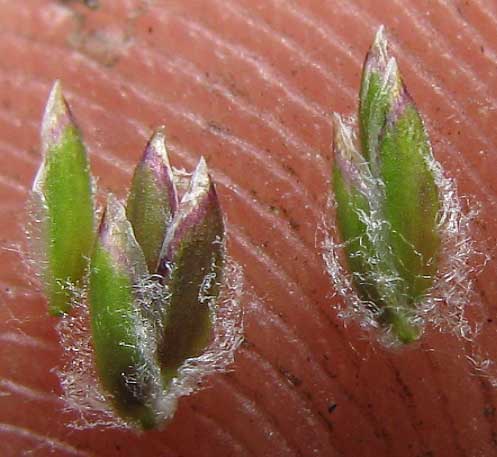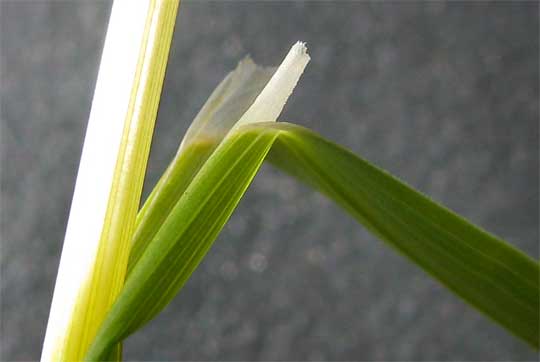Excerpts from Jim Conrad's
Naturalist Newsletter
from the June 7, 2009 Newsletter, issued from the Siskiyou Mountains west of Grants Pass, Oregon:
HOWELL'S BLUEGRASS
At the strawberry bed's edge a grass's panicle of flowers rose knee high on a slender stem, as shown below:

I thought I recognized the grass as a bluegrass, genus Poa, but to be sure I broke apart a spikelet, lay some florets on the tip of my gardening-dirty fingertip, and what I saw convinced me that it was indeed a Poa. You can see the evidence yourself below:

Those are the grass's tiny flowers, called florets. At the picture's right three florets are joined together; a single floret stands at the far left. Each floret is about 3mm long (±0.1 inch). To see how florets are joined into spikelets, check out my Grass Flower Page at http://www.backyardnature.net/fl_grass.htm.
Thing is, at the base of each floret in most Poa species there's a cobwebby tuft of hair, and that picture shows that the florets of this Poa bear a lot of cobwebby hair.
Though Kentucky calls itself the Bluegrass State, California's Jepson Manual refers to California as the evolutionary center for the genus Poa in North America, the main evidence being high species diversity here for the genus. About 33 species are listed. The species in the picture keys out to Howell's Bluegrass, POA HOWELLII, native from southwestern British Columbia south not far inland all the way to Mexico's Baja California.
While I was examining this grass I photographed another feature often used in grass identification, its ligule. Poa howellii's ligule is shown below:

In that picture I've tugged on the grass's blade at the right so that its base pulls away from the yellowish stem at the left, which normally the ligule lies flush against. The ligule is the pale, fingernail-like item projecting upward from the blade's base. Traditionally it's been surmised that grass ligules block rainwater, dust and spores from entering the blade's sheath below the ligule. Recent studies find that ligules may also secrete chemicals for one reason or another.
Ligules come in a world of shapes, sizes, textures and configurations, plus many grasses don't have them at all. They're of enormous help when identifying nonflowering grasses.